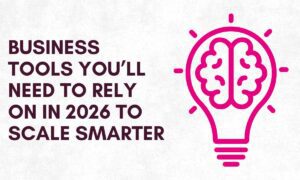In today’s world, Ravindra Reddy Madireddy, a seasoned scholar and researcher in healthcare automation, brings forward an incisive exploration of how artificial intelligence is reshaping the clinical and administrative landscapes of modern medicine. With a deep understanding of medical informatics and intelligent systems, he presents a futuristic vision grounded in practical outcomes and data-driven analysis.
A New Era of Smart Healthcare
Healthcare systems across the globe are grappling with rising costs, staff burnout, and overwhelming administrative burdens. Agentic Process Automation (APA) is emerging as a game-changing solution, an evolution from traditional automation, powered by cognitive AI. Unlike rigid rule-based systems, APA uses machine learning and natural language processing to understand, adapt, and improve. These capabilities allow it to manage unstructured data, handle exceptions, and autonomously evolve with minimal human intervention.
Revolutionizing Administrative Workflows
APA is significantly transforming core administrative functions. In Electronic Health Record (EHR) management, APA slashes documentation time by up to 42%, helping clinicians reclaim nearly two hours daily for direct patient care. It also enhances data accuracy and reduces medical errors through intelligent cross-verification. APA-based patient scheduling platforms cut no-show rates by up to 38% and improve clinic utilization, while insurance processing benefits from reduced denial rates and faster payment cycles. Additionally, APA aids in regulatory compliance by monitoring privacy violations and streamlining quality reporting, drastically reducing manual labor and associated costs.
Clinical Intelligence at the Forefront
On the clinical side, APA’s diagnostic tools are outperforming traditional systems. Deep learning now rivals expert radiologists, achieving higher sensitivity and specificity in interpreting images. In oncology treatment planning, APA reduces planning time and improves outcomes by continuously adapting therapy based on patient response. For chronic diseases, this personalization results in fewer hospitalizations and emergency visits.
APA’s predictive analytics shine in intensive care and chronic disease management—spotting risks like sepsis hours before symptoms or identifying patients likely to be readmitted. These predictions enable proactive interventions that save lives and cut costs. Real-time monitoring in post-operative care further strengthens APA’s role by detecting early signs of deterioration, triggering timely responses, and reducing ICU transfers.
Overcoming Barriers to Implementation
Despite the promise, APA integration comes with challenges. Legacy systems often lack interoperability, making integration time-consuming and expensive. Hospitals need custom APIs and middleware solutions, which can extend implementation timelines. However, phased rollouts and workflow redesigns have proven effective in easing transitions and maximizing returns.
Privacy and security are also pressing concerns. APA increases the volume and complexity of data exchanges, amplifying vulnerability. Advanced safeguards like homomorphic encryption and differential privacy are crucial in mitigating risks and ensuring regulatory compliance.
Training is another cornerstone of successful implementation. Institutions investing in simulation-based and modular training report significantly better adoption and satisfaction rates. Importantly, ethical concerns around AI decision-making, including bias and transparency, must be addressed through formalized frameworks and fairness-aware algorithms.
Tangible Impact Across the Board
APA delivers tangible ROI. Hospitals report reduced administrative burden freeing up 800 clinician hours annually and improved financials through fewer claim denials and faster payments. Staff shift from paperwork to patient care. Patients benefit from better communication, smoother scheduling, and improved outcomes, leading to higher satisfaction, fewer readmissions, and stronger value-based care performance.
Glimpse Into Tomorrow’s Ecosystem
Looking ahead, APA is poised to integrate with emerging technologies like quantum computing, natural language understanding, extended reality, and edge computing. These synergies will unlock faster, smarter, and more intuitive systems. Hospitals may soon rely on APA-powered augmented reality for training, or deploy edge devices for near-instant decision-making in critical scenarios.
Regulatory landscapes are also shifting. While compliance costs are rising, APA itself is proving effective in managing regulatory complexity. With international standards on the horizon, scalability and cross-border cooperation will become more feasible.
In conclusion, Ravindra Reddy Madireddy’s exploration presents APA as more than a technological leap; it is a strategic necessity in a healthcare environment defined by complexity and urgency. The vision of digital agents continuously enhancing care, optimizing outcomes, and elevating human interaction is not a distant dream, but a rapidly approaching reality. As institutions embrace these innovations with thoughtful planning and ethical stewardship, the future of intelligent, patient-centered care becomes clearer and closer.



































